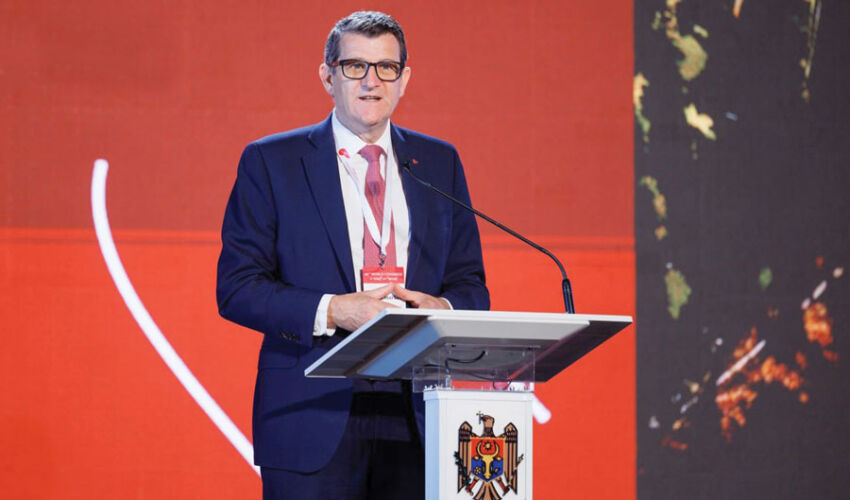
John Barker
John Barker, Director General of the International Organization of Vine and Wine (OIV), in his speech at the 46th OIV World Congress, which took place on June 16-18 in Chisinau, noted that the wine industry is currently facing the effects of global warming, changing consumer preferences and increased uncertainty in geopolitics and trade.
“Today, more than ever, we must rely on collaboration because no one region or country can have all the solutions. And on science to find answers to the key questions facing the industry,” believes Mr. Barker.
Total wine production in 2024 is estimated at 226 million GL (1 hectoliter equals 100 liters), which is 4.8% less than the already historically low figure for 2023. This is the worst result of global wine production since 1961, mainly due to extreme climatic conditions (heat and drought). In addition to this, in some countries the decrease in production is caused by lower consumption. The European Union accounts for 61% of the world wine production – 138.3 million GL (-3.5%, year-on-year). The Southern Hemisphere accounts for 20%, or 45.8 million GL (-3.6%).
Climate change has affected the volatility of global production (expressed as a percentage). For 100 years (since 1925), this indicator gradually decreased (which is good) until about 2010, because harvests became more consistent and stable, with greater geographic diversity, technology, knowledge and regulations improved. And for the last 15 years, volatility has been increasing again, primarily because of significant and unpredictable weather events.
According to preliminary estimates by the OIV, global wine consumption last year was down 3.3% from the previous year – to 214.2 million Hl. This is the lowest level in 60 years. Several factors contributed to this. Inflationary pressures and market uncertainty affected prices and consumer sentiment. Changes in consumer preferences and demographics have also had an impact and will continue to affect the wine market in the future.
“In fact, declining consumption is not a new phenomenon,” continues the OIV CEO. – In the large traditional wine producing countries of Europe and South America, this trend has been observed since the 1960s, with the biggest declines occurring in the 1980s and 1990s. So the last 15 years have been relatively stable. Global wine consumption during this period has been supported by growth in North America, the UK, Oceania and East Asia. The latest data reflects that these growth markets are stopping or even declining. On a positive note, however, as in 2023, low consumption in 2024 is balanced by low production. At least globally, the industry is unlikely to face an overproduction situation, even if the situation may be different in some wine regions.”
International trade is very important for the global wine industry, whose role has grown tremendously over the last 100 years. Whereas in 1924 an average of about 10% of wine was consumed outside the country of origin, in 2024 it will be 47%, indicating a highly globalized wine market. Even since 1990, this figure has increased by 30pc. For most of the century, trade was mainly between regional blocs or countries with colonial ties. But since the mid-1990s, international wine trade has begun to accelerate as markets have grown and diversified. It is no coincidence that this is when the WTO agreements on tariff and non-tariff barriers were signed.
World wine exports for 2024 totaled 99.8 million GL (-0.1%) worth €35.9 billion (-0.3%). The average export price has risen to 3.6 euro/l, almost 30% above pre-pandemic levels. On the one hand, the premiumization trend became more pronounced. On the other hand, inflationary pressures have taken their toll, as the cost of wine production and transportation has risen sharply.
“Trade today is much more than a simple economic transaction. It is a cultural exchange, knowledge and know-how. It is an incentive for cross-border investment, and an opportunity that depends on the stability and reciprocity that international institutions provide. The OIV is part of this system, promoting cooperation and harmonization to support its member countries and the international viticulture and wine industry,” concluded John Barker.













